Do you have a question about the Panasonic KX-NTV150 and is the answer not in the manual?
Provides advice to avoid unauthorized access, including keeping passwords secret and changing them regularly.
Introduces the KX-NTV150/KX-NTV160 as SIP communication devices compatible with existing SIP systems.
Explains how to reset the KX-NTV150/KX-NTV160 to factory default settings using hardware buttons.
Guides on connecting the KX-NTV150 to a non-PoE switch via an Ethernet cable.
Explains connecting the PoE-compliant KX-NTV150 to a PoE-enabled switch via a single Ethernet cable.
Guides on connecting the PoE-compliant KX-NTV160 to a PoE-enabled switch via an Ethernet cable.
Details connecting the device behind a router and port forwarding for Internet access.
Provides information on registering the KX-NTV150/KX-NTV160 to a SIP PBX, including activation key requirements.
Describes how to establish voice and video communication using the KX-NTV150.
Details the process of pressing the call button to initiate a call and call status indications.
Explains camera control features like ePTZ, door locking, and call termination based on Dial Key.
Describes how to establish voice and video communication using the KX-NTV160.
Details the process of pressing the call button to initiate a call and call status indications for the KX-NTV160.
Explains camera control features like ePTZ, door locking, and call termination based on Dial Key for the KX-NTV160.
Guides on installing the Installation Wizard App to search and set up camera devices.
Explains how to access the devices through web browsers and RTSP players.
Explains how to connect the KX-NTV150 to a wireless network using the WPS button.
Describes manual configuration of wireless settings, including SSID, mode, and security type.
Details entering wireless settings like SSID, mode, and encryption type via the Configuration menu.
Explains video title, H.264 protocol/media options, time display, and Global View functionality.
Describes digital PTZ control, preset positions, and controlling settings via Dial Key on SIP phones.
Explains digital zoom, pausing/stopping streaming, MP4 recording, volume, mute, talk, and full screen modes.
Explains selecting stream transmission modes and saving options, including H.264 media and protocol settings.
Explains configuring basic system settings like host name and system time.
Details the feature to upgrade the device's firmware, taking a few minutes to complete.
Provides critical notes, steps, and messages related to the firmware upgrade process.
Details restoring the device to factory default settings, with options to retain Network, DST, or Language settings.
Guides on setting outgoing numbers and SIP status timers under SIP ® General settings.
Details setting the outgoing SIP number in basic mode or by time periods in advanced mode.
Details setting up PBX server IP address and authentication information for SIP registration.
Explains configuring image settings including video title, timestamp, and color options.
Details adjusting brightness, contrast, saturation, sharpness, gamma curve, defog, and 3D noise reduction.
Covers measurement window, exposure level, time, gain, and WDR settings for optimal image capture.
Explains how the device handles SIP and RTSP connections, supporting multiple streams and frame sizes.
Explains configuring wired network connection, setting Network Type to LAN, and obtaining IP address automatically.
Details manually assigning a static IP address, subnet mask, gateway, and DNS servers.
Details enabling Wi-Fi, SSID, wireless mode, and security options like None, WEP, WPA-PSK, WPA2-PSK.
Explains enabling password protection and creating multiple user accounts.
Explains enabling authentication and encrypted communication over SSL for enhanced security.
Guides on enabling HTTPS communication and creating/installing a certificate for secure connections.
Explains enabling port-based network access control using IEEE 802.1x and its components.
Details the authentication process for IEEE 802.1x, including certificate requirements and EAP methods.
Explains how to control the Pan/Tilt/Zoom operations of the KX-NTV150/KX-NTV160.
Explains configuring events based on triggers like motion detection, specifying schedule, trigger, and action.
Details trigger sources: Video motion detection, Periodically, Digital input, System boot, Recording notify.
Defines actions to be performed when a trigger is activated, such as sending media to servers.
Guides on adding server settings (Email, FTP, HTTP, Network Storage, SIP Outgoing) for event notifications.
Specifies media types (Snapshot, Video clip, System log) to be sent when a trigger is activated.
Explains how to enable motion detection, configure detection windows, sensitivity, and item size.
Explains connecting DI/DO devices, defining triggering conditions, and setting make time for digital output.
Guides on setting tamper detection to identify incidents like redirection, blocking, or unfocusing.
Explains how to configure recording settings, including adaptive recording, schedule, and capacity.
Details setting recording name, enabling recording, and using adaptive recording for frame rate control.
Explains adaptive recording, trigger sources, and pre-event/post-event recording for bandwidth and storage saving.
Details selecting network storage (NAS) for recorded video files and setting up a NAS server.
Provides physical and power specifications for KX-NTV150 and KX-NTV160, including dimensions, weight, and power source.
Specifies stream configuration, codec support, resolution, and frame rates for video.
Lists features like power supply, network interface, PLC, echo cancellation, codecs, dial key, and tone.
| Camera | Yes |
|---|---|
| Network | 10/100Base-TX |
| Power Supply | PoE (IEEE 802.3af) |
| Video Compression | H.264 |
| Power | PoE (IEEE 802.3af) |
| Type | IP Video Intercom |
| Night Vision | Yes |
| Display | 3.5-inch color LCD |
| Audio | Full duplex |
| Audio Compression | G.711, G.726 |
| Network Interface | RJ-45 |
| Resolution | 640 x 480 pixels |
| Operating Temperature | -10 °C to 50 °C (14 °F to 122 °F) |
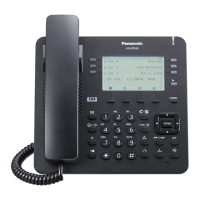
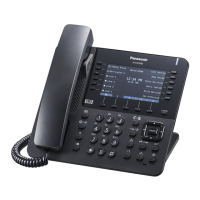
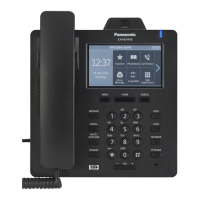

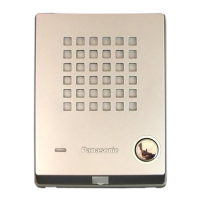
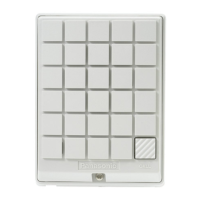


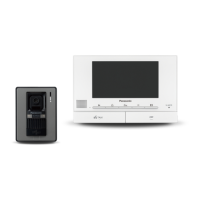
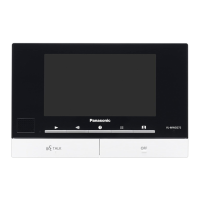

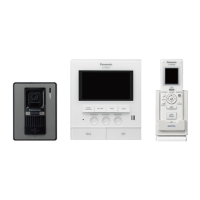
